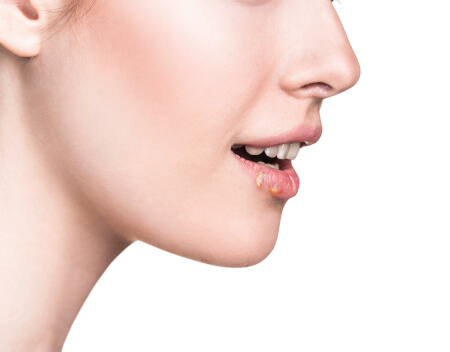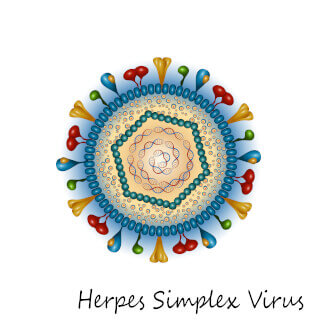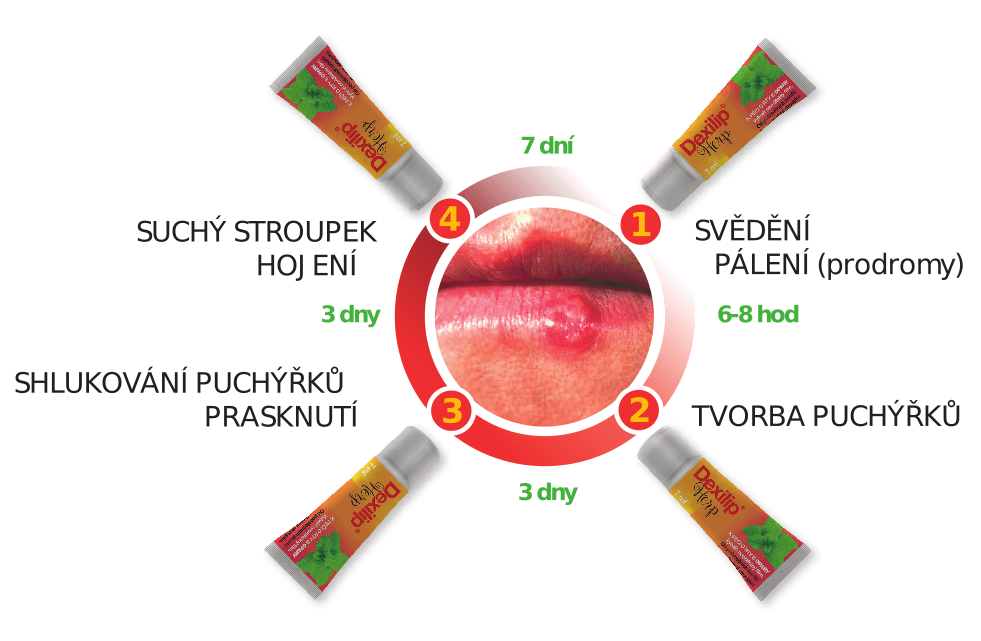



Before reaching two years of age, children are protected from viruses by the antibodies from their mother; however, between 3 and 14 years the presence of viruses rapidly increases. It is estimated that up to 80% of adults carry the cause of the oral herpes, the herpes simplex virus type 1 (HSV1), in their bodies - but only 20% has experienced its manifestation on their lips.
The herpes virus most often manifests by cold sores in their surroundings but it can also appear next to nostrils, on the cheeks, eyelids, chin, neck – in short, mostly somewhere in the upper part of your body.
You need to remember that this is a contagious viral infection - it is most often spread by touching the mouth. The virus can also be present in tears. Currently, there is no efficient long-term treatment which could completely remove the virus from the human body.
When the herpes of the lips appears, you suffer from a pinching, itchy, irritating pain of your sensitive lips. The most unpleasant stages are usually those when the blisters appear and ooze. The blisters don’t heal easily, the affected spot is cracking, bleeding, hurting. The herpes on the lips usually prevents you from speaking – not to mention smiling or kissing. At the same time it can badly affect your self-confidence due to its visibility.
Responsible people also realize the risk of infecting their loved ones, especially children.
After the first infection the virus gets into the nervous system where it stays latently without transforming into real herpes.
Oral herpes can appear for various reasons, especially:

Afterwards the virus hides in the nervous system again and waits there for another trigger – and the opportunity to form visible herpes once more.
This is a very efficient strategy which has enabled the virus to survive for centuries. In the first stage when the lip just tingles, itches and tickles softly, the skin cells used by the virus as factories must increase their metabolic activity - meaning they do so “on demand” for the virus.
Then they start to build, multiply and replicate in accordance with the genetic information of the virus – simply put, they start creating its copies. Many copies.
Once the cell is not able to cope anymore, and is filled with many “descendants” of the initial virus, it ends its life by bursting. This is the moment when, together with the contents of the blister, a large number of viruses (virions) are released into the surroundings. In case they find a new organism, the whole cycle repeats and it is spread to another person. Unfortunately, even after the scab is healed, the virus hides in the nerve ganglia and waits for the next good moment to form visible herpes.